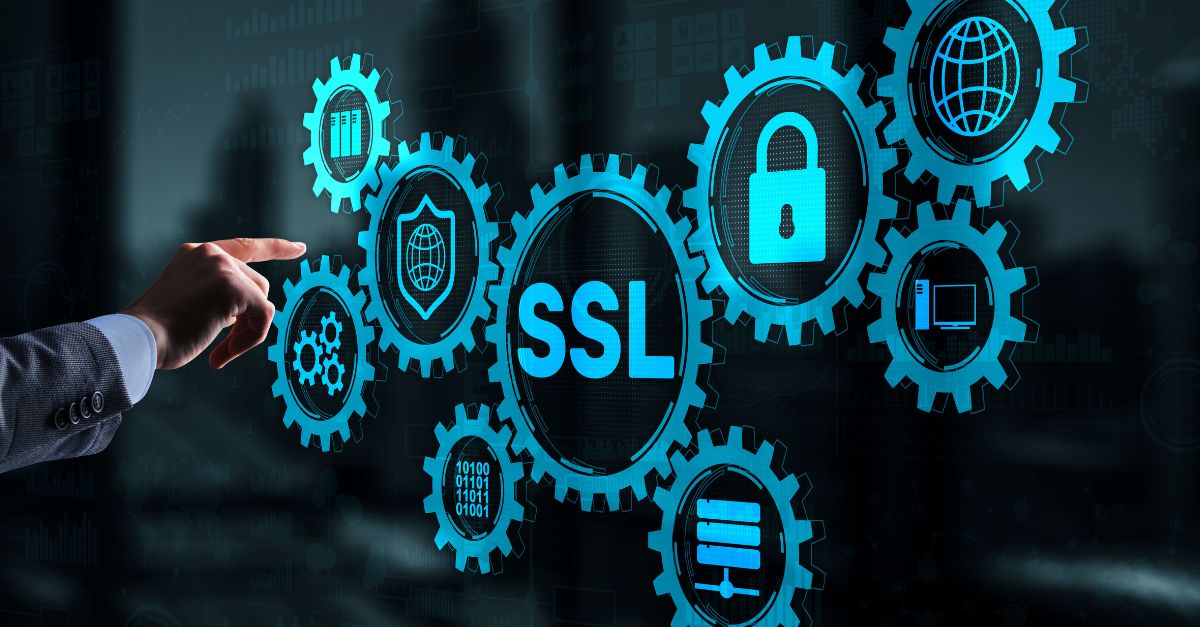In the world of certificate management and security, encryption of communication is vital. As most organizations will know, SSL / TLS encryption plays a crucial role in safeguarding sensitive information in transit between servers and web browsers. Ensuring that the transmitted data is accessed only by the intended recipient requires up-to-date encryption to prevent man-in-the-middle (MiTM) cyber-attacks which can eavesdrop on and intercept data exchanges.
As more organizations strive for SSL / TLS compliance, they must ensure that this does not drastically hinder their website performance and speed. One of the most popular solutions to counteract large data transmissions is to use a CDN, or Content Delivery Network. Contrary to popular belief, CDNs are - more often than not - the biggest contributing factor towards good SSL / TLS performance.
A CDN essentially reduces latency and speeds up the secure ‘handshake’ process between servers and browsers, delivering content more quickly to the user. But that’s not all - so let’s explore how CDNs can bolster SSL / TLS encryption while improving overall performance.
Understanding SSL / TLS and Its Challenges
SSL (Secure Sockets Layer) and its successor TLS (Transport Layer Security) are protocols used to establish secure, encrypted connections between browsers (clients) and servers. These security protocols are there to ensure that any data, such as login details, credit card information, emails, photos, and critical files, remains confidential and hidden during transmission.
SSL / TLS has been an important factor in safeguarding the information of everyone who utilizes the Internet for business or leisure, allowing them to make secure transactions and share data confidentially and lawfully. It has also evolved into an important ranking factor in Google’s increasingly complex and evolving algorithms, meaning that businesses with no SSL / TLS certification risk falling drastically behind in rankings. This is particularly helpful for small companies growing in an increasingly UX-driven and fast-paced online purchasing environment.
Additionally, the SSL / TLS connection also possesses specific differences from its regular TCP counterpart. Typical TCP connections are established through a ‘three-way handshake’, with a connection request sent (SYN), an acknowledgement (SYN/ACK) and a response (ACK) closing the loop. SSL / TLS connections require additional back-and-forth communications as the browser and server agree on the compatible mode of encryption, mutually verify one another, and generate symmetric keys to encode and decode all information exchanged during the session.
As such, the extra steps in the handshake process and the numerous connections to verify across an organization’s infrastructure add to a server’s resource capacity and response times.
How CDNs Improve SSL / TLS Performance
CDN solutions offer a proactive and cost-effective way to help businesses mitigate many of these issues with latency, capacity, and response times. According to 6sense data, there are nearly four million companies that are using CDN software, meaning that they clearly recognize its benefits as a solution.
As users attempt to access resources from geographically diverse locations, the implementation of a CDN allows servers to bridge those gaps and deliver data more quickly without compromising security.
Reduced Round Trip Time (RTT)
The modus operandi of CDNs is to distribute content across a broad network of servers located worldwide, which can reduce the physical distance between users in a specific area and the nearest server.
With carefully placed CDN servers, SSL / TLS handshake times can be reduced and less prone to errors, connections can be established faster, and response times for subsequent requests can be improved with the help of faster local caching.
Session Resumption and Caching
CDNs are known for leveraging various processes and techniques to speed up repeat visits to website servers for users. Returning visitors can invariably skip the full handshake process after their first visit thanks to their IP address and credentials being assigned TLS Session IDs, which can signal to the server that a user is valid and has, ostensibly, ‘passed security’.
By extension, any encrypted session information is stored client-side, enabling the quick restoration of sessions. For example, returning to a user’s shopping cart after leaving the website for a short period, with all items stored intact.
Additionally, persistent connections between the origin server and the CDN reduce the need for frequent full handshakes, leading to an improved and faster experience.
Load Balancing
Many organizations experience fluctuations in high network traffic, particularly during seasonal peaks. When these situations occur, and when the server needs to distribute resources to more clients, CDNs can help distribute requests across multiple dispersed servers. In turn, this ensures that no single server becomes overwhelmed to the point where it experiences complete downtime.
Security Benefits of CDNs for SSL / TLS
Beyond the clear performance improvements for CDN customers, these solutions also enhance many of the inherent security aspects of SSL / TLS.
As mentioned above, many CDNs come with built-in SSL / TLS certificates from trusted Certificate Authorities (CAs). This means that automatic enrollment of encryption becomes easier, with any new updates and patches becoming more autonomously applied.
CDNs also tend to offer easy activation of HSTS (HTTP Strict Transport Security) which ensures that domains and subdomains are exclusively accessed via SSL/TLS, thereby reducing the risk of downgrade attacks and minimizing the risk of users accessing unencrypted and unsecured resources.
As cyber threats continue to proliferate, including MITM and DDoS (Distributed Denial of Service) attacks, CDNs can help mitigate them. The lattermost attack has experienced a 117% year-on-year increase, according to leading CDN provider CloudFlare.
They can absorb large amounts of network traffic, filtering requests based on legitimacy and identifying and blocking malicious attempts to infiltrate resources. This is all done without affecting the stability of SSL / TLS connections already established during sessions with legitimate users. Collectively, reputable CDN providers are also cognizant of newly discovered cyber threat vulnerabilities and implement new patches and improvements regularly.
In Summary
The CDN market - already experiencing tremendous growth - is expected to reach a $36.51 billion valuation by 2028. While CDNs undoubtedly offer tremendous SSL / TLS performance and security benefits, users must be mindful of a few additional factors.
CDN providers can experience service disruptions, meaning that sites on these servers may also be affected. The symbiosis between CDNs and SSL / TLS will only continue to strengthen in the coming years, ultimately paving the way for a faster, more secure web for everyone. However, there are likely to be obstacles along the way - don’t expect 100% perfection straight away, particularly if you’ve got a complex server setup.
Adding CDN solutions introduces another layer to your organization’s infrastructure which, while on the surface a security improvement, means that troubleshooting, vendor lock-in, and contractual agreements will need to be considered. When it comes to future migrations through your CDN, it is worth bearing these in mind too. The more complex the setup, the more challenging migrations will be.
Additionally, there are likely to be additional expenses and cost factors associated with taking your operations through a CDN setup. However, despite these upfront costs, the long-term ROI will make the investment worth it. Switching your SSL / TLS provider to GlobalSign will also make the transition much easier.
By selecting the right CDN provider and implementing these strategies, organizations can harness the power of these solutions to provide their users with a secure, high-performance experience that meets their needs and, most importantly, keeps their data secure.
Note: This blog article was written by a guest contributor for the purpose of offering a wider variety of content for our readers. The opinions expressed in this guest author article are solely those of the contributor and do not necessarily reflect those of GlobalSign.







